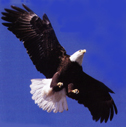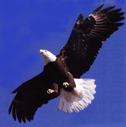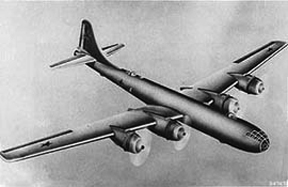|
The Soviet Franz Josef LandOverflight by Editor's Introduction |
|||||||||
 |
 |
||||||||
|
story of one of the more challenging overflights of Soviet territory during the early years of the budding Cold War. This story is very complementary to the research study included on this web site under the title The Impact of U.S. Aerial Reconnaissance during the Early Cold War (1947-1962): Service & Sacrifice of the Cold Warriors by Frederick J. Ferrer The author of this story, Roy E. Kaden, and his RB-50 crewmates, Prologue During the WW II conflict with Japan, three B-29 aircraft encountered operational problems which resulted in emergency landings on Soviet Air Bases. These aircraft were interred by the Soviets and subsequently confiscated. Stalin, having become interested in building a Strategic Bombing capability directed that these aircraft be utilized as pattern mockups in order to make exact duplicates of the B-29. |
|||||||||
| A crash program was instituted to build a bomber fleet. The resulting 4 engine Soviet aircraft became known as the TU-4. Production of the TU-4, capable of carrying atomic weapons, reached full capacity in the late 1940's. Some 845 of these aircraft were built. The operational range of the TU-4 was such, that only through the use of one-way missions could they launch a bombing strike into the United States. However, the possibility of the use of this tactic was viewed as a threat, and considered as a possibility by the War Planners. |
|||||||||
 |
|||||||||
|
A copy of the US B-29 Source: http:www.ufx.org/air_defense/tuf.htm |
|||||||||
| **(See article referencing the TU-4, in the Air and Space Magazine, dated March 2001. You may also review a similar story on this web site found by clicking on this title Russian B-29 Clone — The TU-4 Story contributed by Wayland Mayo. You may return to this page through use of your back button.)
In 1951, critical areas of Soviet capability for delivery of atomic weapons on targets within the United States consisted of the areas of Western Siberia, the Murmansk area on the Kola Peninsula and Eastern Siberia on the Chukotskiy Peninsula opposite Alaska. All of these areas are above the Arctic Circle. The lack of accurate intelligence from these areas, posing a threat to the security of the United States was of considerable concern, particularly since we were involved in an ongoing war in Korea, with known Soviet participation. In the Spring of 1952, with the Korean war still in progress, intelligence reports indicated that the Soviets were staging TU-4 aircraft in North Western Siberia at Dikson, on the Kara Sea and also on the Chukotskiy Peninsula. Soviet plans for these forces was unknown. During this time there was also heightened concern, by SAC and USAF, “War Planners”, that the Soviets could possibly be constructing an Air Base, similar to Thule in the high Arctic islands of the Franz Josef Land Archipelago. (There existed unfounded rumors and wide speculation to this effect.) In the event of war with the Soviets, a Soviet Air Base in the islands, being on a direct path over the high Arctic into central and European Russia, would pose a direct threat to our retaliatory overflying bomber stream. Further, if the Soviets were building a large base in the Archipelago, TU-4 bombers on one-way missions staging from one of the larger islands, rather than from Dikson, would be able to penetrate approximately 500 miles deeper into the United States heartland. It was most obvious that there was a critical need for a reconnaissance intelligence mission into the Archipelago. Thus, the following narrative presents the story of this Presidentially approved highly sensitive “Top Secret”, mission over the Soviet islands. End Prologue — Go to Table of Contents You may go to Cover Page — Editor's Introduction & Prologue — Table of Contents Chapters — 1 — 2 — 3 — 4 — 5 — 6 — 7 Or, you may Home - Contact Us - Cold War Hist. - 91st SRS Hist. - Stardust 40 Mission Story |
|||||||||